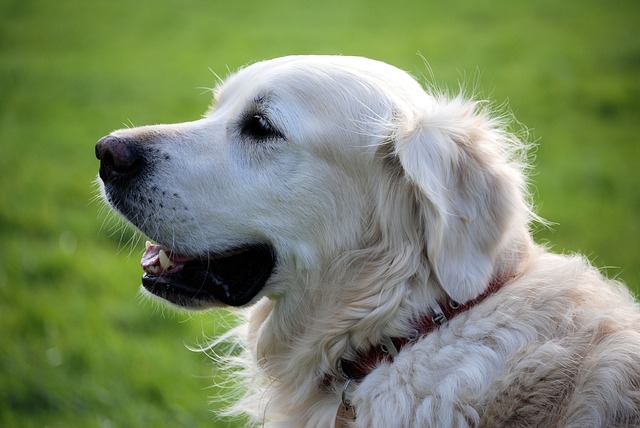
How to Teach Dogs to Stay Still
Dogs struggle with “stay” because their brains are wired to “follow the pack”—and you’re their pack. To them, staying put while you move feels wrong
That stubborn pull on the leash isn't just poor manners – for aging companions, it often signals deeper discomforts. Training an older dog to walk politely on leash requires ditching outdated puppy methods. Senior dogs commonly face stiff joints making each step ache, fading eyesight turning familiar routes confusing, or hearing loss preventing clear commands. Anxiety born of these changes can manifest as pulling, freezing, or reluctance. Pushing them like a young athlete ignores their reality; force creates fear, not cooperation. Recognizing these physical and sensory shifts is the critical first step before any leash training techniques for senior dogs begin.
This is precisely why positive reinforcement for older dogs leash training isn't just kinder, it's scientifically smarter. Their learning pace may differ, but their desire to please often remains strong. Forget harsh corrections; focus instead on celebrating every micro-success. High-value rewards become your secret weapon – think tiny bits of boiled chicken, gentle ear scratches, or a soft, happy "yes!" delivered instantly when they offer loose leash behavior, even for a second. This method respects their age and potential anxieties, building confidence instead of stress. It transforms training from a chore into a bonding session tailored to their current abilities.
Patience and observation are your most vital tools. Start indoors where distractions are low. Simply let your dog wear their harness and drag the leash for short periods while offering treats and calm praise, normalizing the feel without pressure. Next, pick up the leash indoors, rewarding them generously for staying near you. When ready to venture outside, begin in a quiet, familiar spot like your backyard. Keep initial sessions incredibly short – five minutes might be ambitious. Aim for multiple micro-sessions daily rather than one long, exhausting walk. Watch their body language like a hawk: panting, lagging, or lip-licking signals overwhelm. Stop *before* they get frustrated, ending on a positive note with a reward. This gradual exposure is key to overcoming leash challenges with older dogs. If pulling starts, become a tree – stand completely still until the leash slackens, then reward and move forward. Consistency is paramount.
Recent research underscores the need for these adaptations. Studies in canine cognitive aging reveal that senior dogs may experience changes similar to mild cognitive impairment in humans. Processing speed can slow, and they might become more easily distracted or forgetful of previously known cues. Physically, arthritis is incredibly common yet underdiagnosed; a 2019 AAHA study suggested nearly 40% of senior dogs exhibit signs. This science informs why we must slow down training, use clearer signals (like gentle leash taps instead of relying solely on voice if hearing is impaired), and prioritize their physical comfort. Understanding how to leash train an aging dog means adapting to their evolving brain and body.
Several common mistakes can derail progress. Never yank the leash or punish fear – this destroys trust. Avoid inconsistency; if loose leash walking is the rule, enforce it gently every single walk. Crucially, don't overlook underlying health issues. That reluctance to walk might be arthritis pain, not stubbornness. Always consult your vet before starting any new training regimen with a senior dog. Rule out pain, vision/hearing loss, or cognitive decline that might require medical management alongside behavioral strategies. Assuming "they should know this by now" ignores their current reality.
Successfully navigating how to train an older dog to walk on a leash profoundly deepens your bond. Each calm walk becomes a silent conversation built on mutual understanding and respect. You learn to read their subtle signals; they learn to trust your guidance. This shared accomplishment, achieved through patience and empathy, fosters immense trust. Those peaceful strolls aren't just exercise; they're vital enrichment, reducing anxiety and boosting their overall quality of life. Witnessing your graying companion trot contentedly beside you, leash loose, is a testament to the enduring connection possible when we meet them where they are, not where they used to be.

Dogs struggle with “stay” because their brains are wired to “follow the pack”—and you’re their pack. To them, staying put while you move feels wrong

I was walking my friend’s Australian Shepherd, Luna, through a Seattle neighborhood last month when a jogger rounded the corner—and Luna erupted into barks

You’re walking your new rescue dog in the neighborhood park when a child on a scooter zips past, and suddenly your pup freezes, lips pulled back in a snarl, growling low in their throat.

You've just moved into a cozy apartment in downtown Chicago, excited to host your first dinner party. But as soon as the doorbell rings, your dog goes wild

It’s 7 AM on a Tuesday, and you’re already wide awake—not because of your alarm, but because your pup is standing at the window, barking nonstop at the neighbor walking their dog.

You’re strolling through your suburban neighborhood in Colorado, coffee in hand, when a kid on a bike rounds the corner. Suddenly, your pup tenses, hackles up